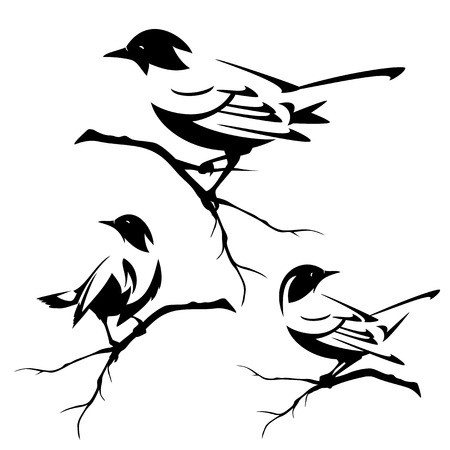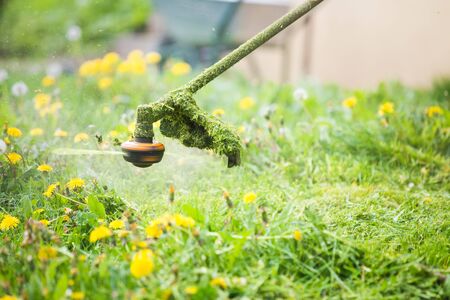1. Understanding the Importance of Wildlife Lawns
Transforming your traditional lawn into a wildlife haven is more than just a trend in the UK—it’s a heartfelt response to our growing need to reconnect with nature right outside our doors. By allowing our gardens to become sanctuaries for birds, bees, butterflies, and hedgehogs, we’re giving a helping hand to local wildlife that faces ever-shrinking habitats. For families, this shift offers an incredible opportunity: children can witness the magic of life cycles, from caterpillars munching on leaves to ladybirds emerging from their hiding spots. It’s a living classroom where curiosity blooms alongside wildflowers. Beyond your own back garden, these changes ripple outwards, creating green corridors throughout neighbourhoods and encouraging community togetherness as neighbours share seeds, stories, and sightings. In the gentle drizzle or precious sunshine of the British seasons, every patch of unmown grass and every clump of native wildflowers brings us closer not only to nature but also to each other—nurturing both wildlife and lifelong learning in the heart of our communities.
Planning Your Wildlife-Friendly Lawn
Before you roll up your sleeves, take a moment to step outside and really observe your lawn. This is the perfect time for some family detective work! With a notebook in hand, explore your garden together and jot down what you see: Are there patches of bare earth? Which areas get the most sunshine? Is the ground soggy or dry? Mapping out these details helps you understand what your outdoor space needs to flourish as a wildlife haven.
Assessing Your Current Lawn
Every lawn is unique, just like every family. To help you get started, heres a simple table to guide your assessment:
| Lawn Feature | What to Look For | Wildlife Potential |
|---|---|---|
| Sunlight | Full sun, part shade, or full shade? | Different plants thrive in different light conditions. |
| Soil Type | Sandy, clay, or loamy soil? | Certain wildflowers and grasses prefer specific soils. |
| Moisture Levels | Is it often wet or dry? | Ponds and bog gardens attract frogs and newts; dry spots are great for bees. |
| Lawn Size | Measure the area available. | Even small lawns can become vital habitats! |
Choosing Native UK Plants and Features
Selecting native species is like inviting old friends over—they’re well adapted to British weather and offer local wildlife exactly what they need. Consider planting wildflowers such as oxeye daisy, red clover, and bird’s-foot trefoil, which provide nectar for bees and butterflies. Native grasses like crested dog’s-tail and red fescue create shelter for insects and birds. And don’t forget hedgehogs—leaving a log pile or a quiet corner with leaf litter gives them a safe place to snuggle.
Simple Features That Make a Big Difference:
- Pond or Mini-Wetland: Even a small water feature attracts frogs, dragonflies, and thirsty birds.
- Hedge or Shrub Border: Hawthorn, hazel, or blackthorn provide berries and nesting spots.
- Bee Hotels: Easy to make together—just bundle hollow stems or drill holes into logs!
- Mown Paths: Leave some grass long but mow winding paths—children love exploring them, and so do hedgehogs!
Together as a family, plan which features youd most enjoy creating. Every choice you make brings nature one step closer to your back door—and offers plenty of opportunities for hands-on learning and magical discoveries all year round!

3. Preparing the Ground Together
Transforming your traditional lawn into a wildlife haven is not just about gardening—its about nurturing curiosity, teamwork, and respect for nature within your family. Before planting wildflower seeds or installing bug hotels, it’s important to prepare the ground properly. This is an ideal stage to involve children, letting little hands help with big changes while learning about the hidden world beneath their feet.
Family-Friendly Turf Removal
Start by marking out areas of your lawn you want to transform. You don’t need to lift the entire turf; even a small patch can make a big difference for local wildlife. Hand tools like spades or turf cutters are perfect for this job—let older children have a go under supervision, and encourage younger ones to collect worms and insects they find in the process. Talk together about how these creatures will benefit from their new wild home.
Soil Preparation: A Sensory Adventure
Once the turf is removed, break up the soil with forks or rakes. Invite children to feel the earth between their fingers, noticing its texture and smell—a gentle reminder that healthy soil is teeming with life. In many parts of the UK, lawns sit on compacted ground, so loosening it helps wildflowers thrive. Mix in a little sand if your soil is heavy clay; this step can spark discussions about different soil types and how plants grow best in each.
Encouraging Participation and Curiosity
Make the transformation a family affair by giving everyone a role—whether it’s digging, sifting stones, or simply spotting interesting bugs. Share stories about British wildlife that might visit your new patch: perhaps hedgehogs rustling for food or bees searching for nectar. By preparing the ground together, you’re sowing seeds of wonder that will grow alongside your wildflowers.
4. Planting and Seeding for Biodiversity
Once you’ve prepared your lawn, it’s time to sprinkle a bit of magic by choosing the right seeds and plants that will invite wildlife to flourish. Selecting native wildflowers, grasses, and pollinator-friendly blooms not only supports local insects and birds but also ensures your garden thrives in the unpredictable British weather. Let’s explore how you and your family can pick the best options together.
Choosing Wildflower Mixes
Wildflower meadows offer an ever-changing tapestry of colour and life. For a classic British touch, opt for seed mixes containing species like oxeye daisy, red clover, cornflower, and field scabious. These are not only lovely to look at but also provide nectar for bees and butterflies throughout the summer months. Look out for specially curated UK-native wildflower mixes at your local garden centre or online – they’re tailored to suit our soils and climate.
Selecting Native Grasses
Native grasses form the backbone of a healthy wildlife lawn, offering shelter for beetles, spiders, and even small mammals. Fescue, bents, and crested dog’s-tail are all excellent choices that blend seamlessly with wildflowers and create a natural-looking meadow. Avoid ryegrass-heavy mixes as these can crowd out delicate flowers.
Comparison Table: Wildlife-friendly Lawn Options
| Type | Examples | Main Benefits |
|---|---|---|
| Wildflowers | Oxeye Daisy, Red Clover, Cornflower | Nectar source for pollinators; colourful blooms |
| Native Grasses | Crested Dog’s-tail, Fescue, Bents | Shelter for insects; supports meadow ecosystem |
| Pollinator Plants | Lavender, Foxglove, Viper’s Bugloss | Sustained flowering; attracts bees and butterflies |
Pollinator-friendly Plants for Year-round Colour
If you’d like to see more buzzing bees and fluttering butterflies with your children, plant species such as lavender, foxglove (watch out for little hands – it’s beautiful but toxic), viper’s bugloss, and knapweed. These plants provide long-lasting flowers from spring to autumn. Consider planting in clusters for greater visual impact and easier feeding for pollinators.
Family Tip: Sowing Together
Let each family member choose their favourite flower or grass from the list above. Sow them in patches so everyone can watch ‘their’ area bloom. It’s a delightful way to connect with nature – together!
5. Creating Habitat Features
Transforming your lawn into a wildlife haven is all about providing the right homes for nature’s smallest neighbours. Think of your garden as a bustling little village, where every creature—from frogs to butterflies—needs a cosy nook to settle in.
Log Piles: Nature’s Apartment Blocks
Gather fallen branches or logs and stack them in a quiet corner of your garden. These natural piles soon become shelter for beetles, hedgehogs, and even slow worms. As the wood slowly decays, it turns into a feast for fungi and insects, while nooks and crannies offer refuge from chilly British nights.
Mini-Ponds: A Splash of Life
You don’t need a sprawling lake—just a washing-up bowl or an old sink sunk into the ground can become a watery retreat for frogs, newts, and dragonflies. Add pebbles for safe exits, a clump of native aquatic plants, and watch as local wildlife flocks to this new oasis. Children will delight in spotting tadpoles wriggling beneath the surface!
Bug Hotels: The Insect B&B
Create a bug hotel using old bricks, bamboo canes, pine cones, and straw stuffed into wooden pallets or boxes. Tuck it somewhere sheltered. Ladybirds, solitary bees, and lacewings will soon check in for the season. Not only does this boost pollination in your patch, but it’s also a brilliant hands-on project for the whole family.
Let Your Imagination Bloom
Whether you’re building fairy-tale log stacks or crafting quirky bug hotels with your children, these features turn your garden into a living classroom—a place where curiosity grows alongside wildflowers. By inviting creatures big and small to share your space, you’re nurturing both local wildlife and young hearts eager to explore nature’s wonders.
6. Maintaining and Enjoying Your Wildlife Lawn
Now that your traditional lawn has blossomed into a lively wildlife haven, it’s time to nurture this new green space with care that fits right into the rhythm of family life in the UK. A wildlife-friendly lawn is delightfully low-maintenance compared to its manicured predecessor, but a little seasonal attention ensures your garden continues to buzz, flutter, and bloom all year round.
Seasonal Tasks for Busy Families
Spring: Welcome the season by clearing away any lingering debris, but leave small piles of leaves or twigs for hibernating insects. This is the time when wildflowers start to emerge—encourage your children to spot the first blooms! If you mow, keep the blades high and only trim pathways or tidy edges. Letting grass grow a bit longer provides shelter for creatures like hedgehogs and beetles.
Summer: Once flowers have set seed (usually after June), cut back patches of meadow grass in stages. This mimics natural grazing and gives wildlife a chance to relocate. Rake up clippings to avoid smothering new growth. Watering is rarely needed, as native plants are well-adapted to British weather—one less chore for your list!
Autumn: Watch for migrating birds and scurrying squirrels gathering supplies. If you have a pond or log pile, now’s a great time to check they’re safe and accessible. Leave seed heads on plants for birds and insects; encourage children to collect seeds for sowing next spring.
Winter: Resist the urge to tidy up too much—messy corners offer vital refuge for overwintering creatures. Take family walks around your garden, noticing tracks in frost or snow, and use these moments to chat about who might be visiting when you’re not looking.
Encouraging Ongoing Wildlife Visits
A wildlife lawn is never static—it grows alongside your family. Top up bird feeders in winter, put out shallow dishes of water in summer, and add new native plants each year as a family project. Keep a simple nature journal together: jot down sightings of butterflies, bees, or even a surprise hedgehog! These shared discoveries make every season special.
Savouring Your Wild Corner
Above all, take time to simply enjoy your garden’s gentle wildness. Spread out a picnic rug among the daisies or play hide-and-seek behind tall grasses. With minimal effort and maximum delight, your family can watch nature thrive right outside your door—a living classroom where every day brings new wonders.
7. Inspiring the Next Generation
Transforming your lawn into a wildlife haven is not just a project for today—it’s a legacy for tomorrow. Involving children in this journey can be both magical and meaningful, nurturing their curiosity and love for nature. Start by giving them their own little patch of the garden to care for, encouraging them to plant wildflowers or build simple bug hotels from recycled materials. Turn wildlife spotting into an exciting family activity: equip your young explorers with a notebook or a simple wildlife journal, where they can record each hedgehog, ladybird, or visiting robin. Make it a fun challenge to see who can spot the most species over a weekend or during the school holidays.
Sharing these discoveries doesn’t need to stop at home. Encourage your children to invite friends round for a mini-nature hunt or host a garden picnic, complete with storytelling about the creatures that now call your garden home. You could even create a “wildlife board” near your front door, where visitors—be they neighbours or classmates—can add their own sightings. By celebrating every new guest, from bees to butterflies, you help weave nature back into the fabric of your community.
Just as seeds need sunlight and water to grow, our children need opportunities to connect with living things. The lessons learned through these shared experiences—patience, observation, kindness—are gifts that last far beyond one season. By nurturing young naturalists today, we’re ensuring that tomorrow’s gardens will continue to buzz with life and wonder.

